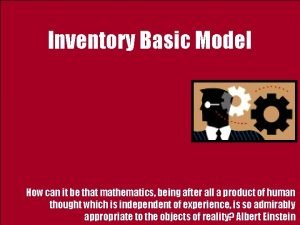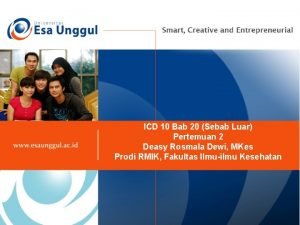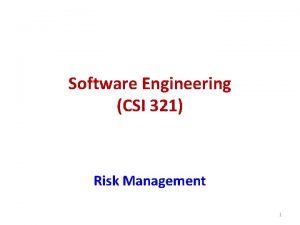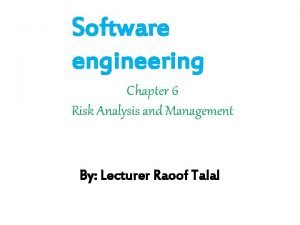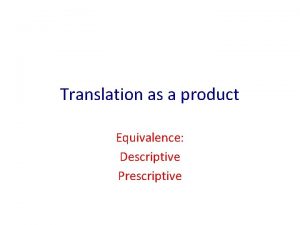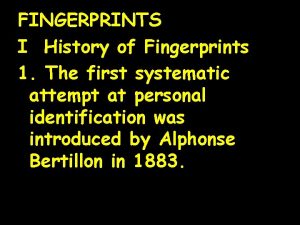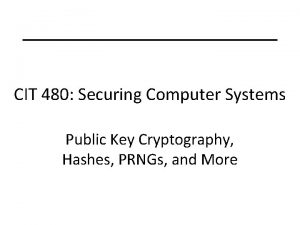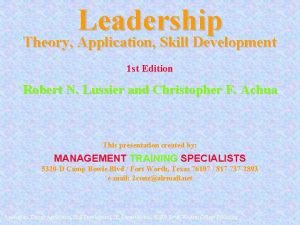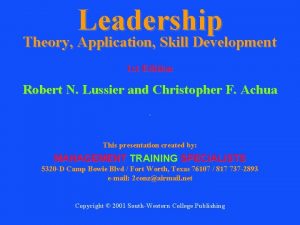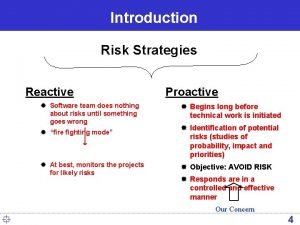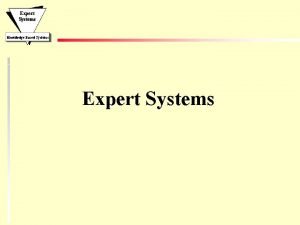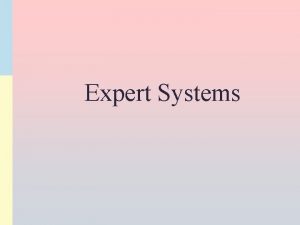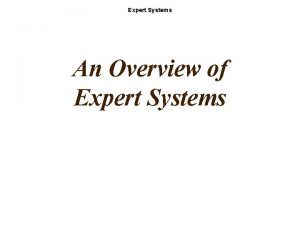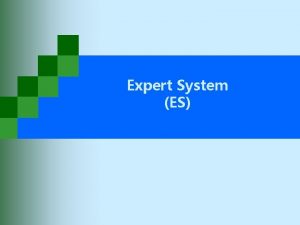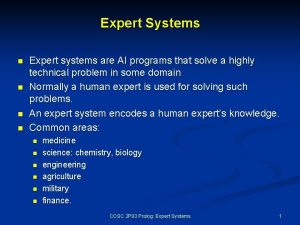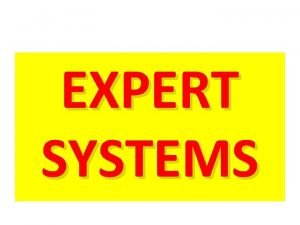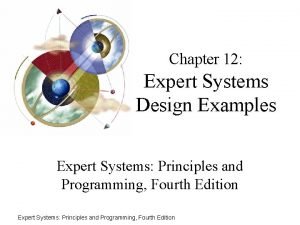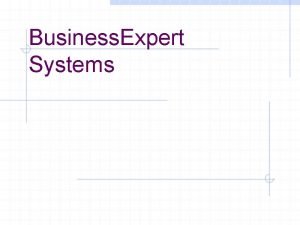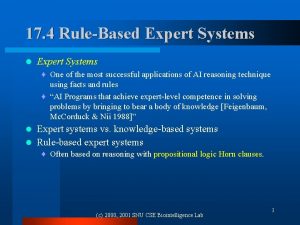Expert Systems Expert Systems Programs which attempt to


















- Slides: 18

Expert Systems

Expert Systems • Programs which attempt to imitate the reasoning processes and knowledge of experts in solving specific problem • Widely used in industry • Apply a direct means of applying expertise • purpose is to make expert knowledge and experience more widely available

Knowledge Engineering • The construction of expert systems is done by using knowledge engineering • This involves – knowledge acquisition - collection – knowledge representation - organisation & representation (IF-THEN rules) – knowledge inferencing – knowledge transfer

Inferencing • making up a new fact based on existing knowledge • Unique feature of ES is ability to reason • expertise is stored in knowledge base • computer is programmed so that it can make inferences • (drawing conclusion from knowledge base) • This is performed in the inference engine • includes procedures regarding problem solving

Rules • Most ES are rule based – Knowledge is stored in the form of rules – problem-solving procedures • IF the engine is idle AND the fuel pressure is less than 38 psi, AND the guage is accurate, THEN there is a fuel system fault

Explanation Capability • Unique ability to explain advice or recommendation • subsystem called the justifier • enables the system to examine its own reasoning and explain its operation

Structure • Development environment – used to build the components and put knowledge into the knowledge base • Consultation environment – used by nonexperts to obtain expert knowledge and advice • Improvement environment

Knowledge Acquisition Subsystem • Accumulation, transfer and transformation of problem-solving expertise from expert sources to a computer • Knowledge engineers gather this expertise • help the expert structure the problem area by interpreting and integrating human answers to – questions – drawing analogies – posing counterexamples

Knowledge Base • Contains the knowledge necessary for – understanding, formulating, and solving problems • Includes facts and rules that use the knowledge to solve specific problems (heuristics) • heuristics express the informal judgmental knowledge in an application area • The information in the knowledge base is incorporated into a computer program by a process called knowledge representation

Inference Engine • Brain of the expert system (rule interpreter) • program provides a methodology for reasoning about information in the knowledge base to formulate conclusions

Explanation Subsystem • Responsibility for conclusions can be traced by answering questions such as: – Why was a certain question asked by the expert system – How was a certain conclusion reached – Why was a certain alternative rejected Knowledge Refining System • Analysis the reasons for success and failure

Development • A tool used to expedite development is called an ES shell • A shell can be used for many applications: insert new knowledge base • Include all the generic components of an ES, but they do not include the knowledge • faster development plus the programming skill required is much lower

Areas of use • Prediction systems – demographic predictions, economic forecasting • Diagnostic systems – medical, software diagnosis • Monitoring systems – compare observations of system behaviour with standards • Control systems – govern the overall behaviour of a system

Reference Expert System applications in business: A review and analysis of the literature Bo K. Wong, John A. Monaco Information and Management Vol 29 Part 3 1995 HF 5548. 125. 15

Benefits • • Increased output and productivity Accessibility to knowledge Decreased decision-making time Reduced downtime Capture of Scarce expertise Flexibility Elimination of the need for expensive equipment • Operations in hazardous environments

Benefits • Increased Capabilities of other systems • Integration of several experts opinions • Ability to work with incomplete or uncertain information • Provide training • Improved decision making • Transfer knowledge to remote locations

Limitations • Knowledge is not always readily available • Expertise can be hard to extract from humans • The approach of each expert to situation assessment may be different, yet correct • It is hard, even for a highly skilled expert, to abstract good assessments under pressure • ES work well only in a narrow domain of knowledge

Limitations • Vocabulary, jargon that experts use for expressing facts and relations is often limited and not understood by others • Help is required from knowledge engineers who are rare and expensive • lack of trust by end users
 Disadvantages of waterfall model in software engineering
Disadvantages of waterfall model in software engineering At the beginning of the play oedipus sends creon to
At the beginning of the play oedipus sends creon to Most inventory models attempt to minimize
Most inventory models attempt to minimize Icd 10 traffic accident
Icd 10 traffic accident Systematic attempt to specify threats to project plan
Systematic attempt to specify threats to project plan Systematic attempt to specify threats to the project plan
Systematic attempt to specify threats to the project plan Contoh kasus delik putatif
Contoh kasus delik putatif Interpersonal communication is complicated
Interpersonal communication is complicated Chapter 4 ap statistics practice test
Chapter 4 ap statistics practice test Descriptive equivalent translation
Descriptive equivalent translation Fingerprint island ridge
Fingerprint island ridge Mrcp uk speciality certificate
Mrcp uk speciality certificate A collision attack is an attempt to
A collision attack is an attempt to Behavioral leadership theories attempt to explain
Behavioral leadership theories attempt to explain Leadership theory application & skill development
Leadership theory application & skill development Behavioral leadership theories attempt to explain
Behavioral leadership theories attempt to explain Systematic attempt to specify threats to project plan
Systematic attempt to specify threats to project plan Reactive risk strategies in software engineering
Reactive risk strategies in software engineering Money management international
Money management international


